When I wrote about making my own hand cream out of tallow, I mentioned that my Mom had told me once about “how to clean your oil” but that I didn’t know how to do it at the time. I promised that the next time I made hand cream, I would ask her how to do it and share it with you.
Well, I needed more hand cream! So here I am, as promised, with this really cool “old school” information. It was far too much to add to the previous post, so I’m giving it a whole post and linking them together.
After the tallow hand cream post (but before I talked to Mom) I Googled “how to clean your oil”. I got a ton of links to the “oil cleansing method” (which I use, actually!), and a lot of stuff about basically filtering your cooking oil through a strainer and coffee filter, storing it in the fridge, and using it within a certain time frame.
People seem to be very cautious about using cooking oil for very long these days; I theorize that this stems from the fact that cooking oils today are usually already pretty nasty to start with. Back in our great-grandmother’s day, though, people used tallow, lard, and other animal fat to cook with, and cleaned and reused them for much longer than is recommended today. I suspect those are just “hardier” fats than today’s vegetable and canola oils.
Frankly, at this point in my food journey I look at things like this: if it worked and was normal for my great-grandmother, then it’s probably the best way to do it!
Back to the oil cleaning!
Turns out, there are two ways to go about cleaning oil. There’s cleaning your COOKING oil my Mom’s way, and cleaning your tallow for candles/creams/soaps.
They’re identical, basically, except for the quantity of water and the fact that after you’ve cleaned your cooking oil once, you filter it, store it, and re-use it.
With the “personal care” tallow, you clean your oil several times. I cleaned mine 4 times (and probably would have done it once or twice more, but ran out of time before work).
It’s easy, but takes time. Not exactly time consuming, more that it’s the kind of project you just sort of squeeze in to your kitchen duties throughout a day or so.
I started with some beef broth I’d made. After it had cooled in the fridge, I snatched the hardened beef fat off the top.
I put that in a pot on the stove, added some water, heated it until melted and filtered it through a mesh filter into a glass.
Then I called my Mom.
I didn’t have enough tallow to make hand cream and was in the process of making more beef broth, so I knew I would have more soon. Mom needed to “dish” the how-to’s of oil cleaning.
It’s so simple!
The steps are as follows:
- Put the tallow in a pan with about a cup of water.
- Heat it slowly until it melts.
- Take it off the heat, and let it cool on the counter.
- Put the whole pan in the fridge until the fat has hardened on top.
- Remove the fat from the pan and dump out the water.
- Clean the pan, or get a new one out, and put the fat into it.
- Add more water and repeat until the oil is whiter, purer and the water has almost no sediment or discoloration.
- Now you’ve cleaned your broth tallow!
Here’s what it looks like, step by step:
This was my second batch of broth fat, in the broth. I removed it, put it in a pan with the original broth fat, and followed the instructions.
After it was melted, I let the pan cool on the counter and then put the whole thing in the fridge to harden. This is what I got after one cleaning:
I broke the fat into pieces…
And took a look at the water. It was kinda gross! Lots of sediment and ickies floating in it.
The tallow wasn’t much better.
So I threw out the water, cleaned the pan, and cleaned the tallow again. Here it is after the second cleaning.
The water was cleaner, but still had some sediment.
The tallow looked much better!
So I washed it a third time. Here’s how a third washing did:
Looking very clean!
Huge improvement!
Still, there were some stubborn bits of sediment remaining, so I decided to pull out a strainer and try to grab them for the fourth cleaning.
Most strainers are not fine enough to catch this sediment, but I had a tea strainer that seemed well-suited to the job.
This was going to be the last time I could clean the tallow, so after I had – again – heated it with water until melted, I strained it into a glass to harden in the fridge. Less surface area=less moisture stuck to the tallow after it has hardened.
When it had hardened, I broke it off the top and threw it in the pan to make hand cream.
I did it exactly as I did in my tallow hand cream post, and in the end it came out much more white and clean looking than my first batch did by far!
Such an easy process, even if it takes some time. It’s well worth it to make such a nice, clean hand cream, though! It’s a little hard to tell in the photos, but this hand cream came out much whiter, brighter, and creamier than my first batch.
I used this cream on my face for two days, and my mystery “I’m 36 and still get pimples” face cleared right up!
Awesome!
So there you have it. How to clean your oil!
By the way, if you want to clean your cooking oil the old fashioned way, you’d simply add a cup of water to your deep fryer, heat it until it stops popping and crackling (that’s the water evaporating off), pour it through a strainer and store! Much cleaner than just straining it and storing it!
Have you ever cleaned your oil like this?
__________
UPDATE! 5/1/2019
Once you’ve cleaned the oil, it still has water in it. This reduces its lifespan and makes it spoil and turn rancid. (Bacteria in the water grows and gets ugly.)
So if you want your freshly cleaned water to last a good long time, toss it in a slow cooker, put a wooden spoon in it, and prop the lid on top of the wooden spoon. Lay a towel over the top of the whole she-bang, and turn it on to high.
It could take a whole day to do, but eventually all that water will boil right out of the oil, leaving nothing but pure, perfectly clean, ready-to-keep-for-ages tallow behind!
Even better, I’ve gently ladled that super hot tallow into sterilized canning jars, placed a sterilized canning lid on top, and set it on the counter and lo and behold those lovely POP sounds ring in my ear! I’ve read that you CAN “can” tallow, but you need to give it the water bath treatment. I’ve never done that; but with the water-free tallow just placed in the jar, I’ve had jars of tallow last me over a year – and I’m still opening them to use!
(Do this at your own risk, of course!)
So there’s another trick to cleaning your own oil. Fatworks is a company that sells jars of tallow, duck fat, lard, etc. and it’s a great option if you run out of time or run out of tallow….but at $16.25 per 14 ounce jar, it gets expensive!
Think about how much money you will save just doing this yourself!
According to those prices, my last time making tallow I made $165 worth of canned tallow!
Happy Oil Cleaning!
__________
This post shared with:






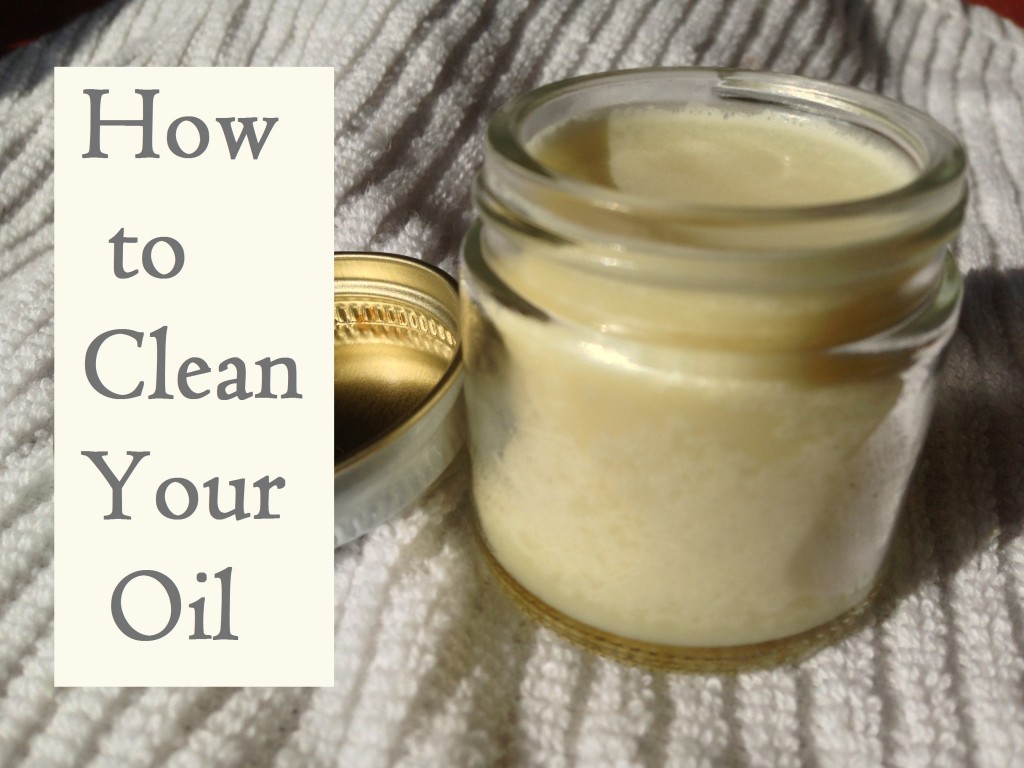
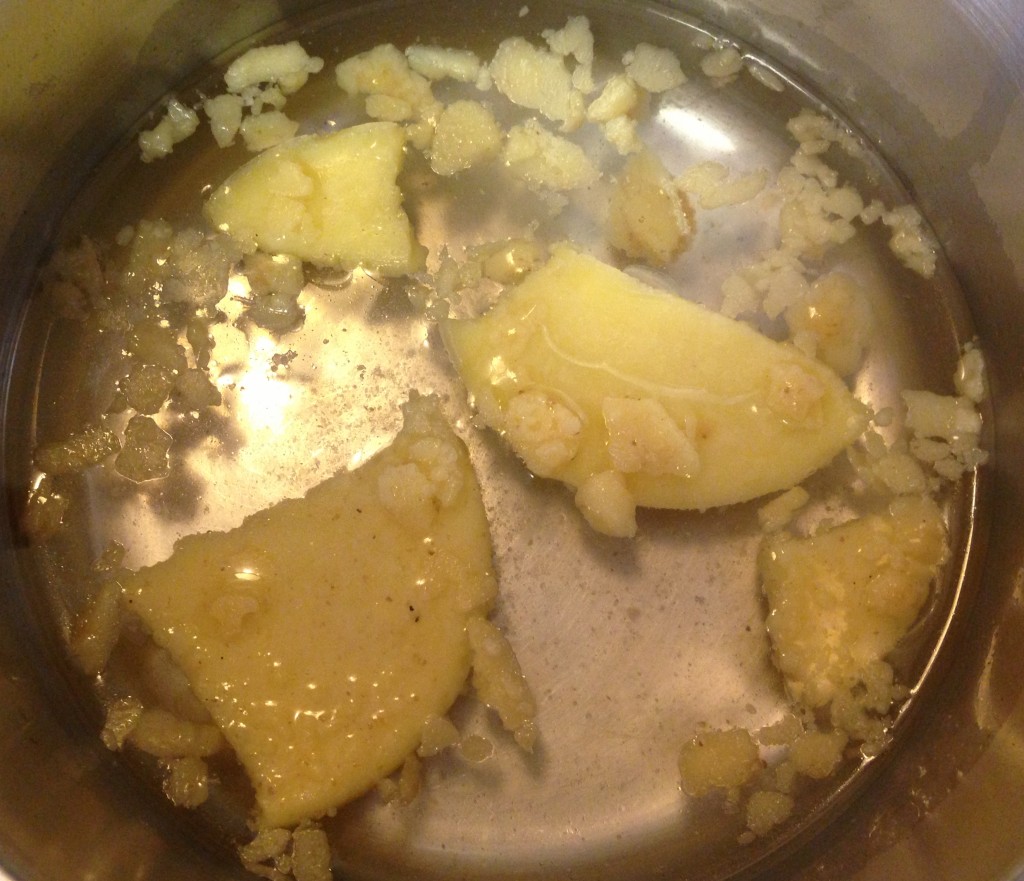
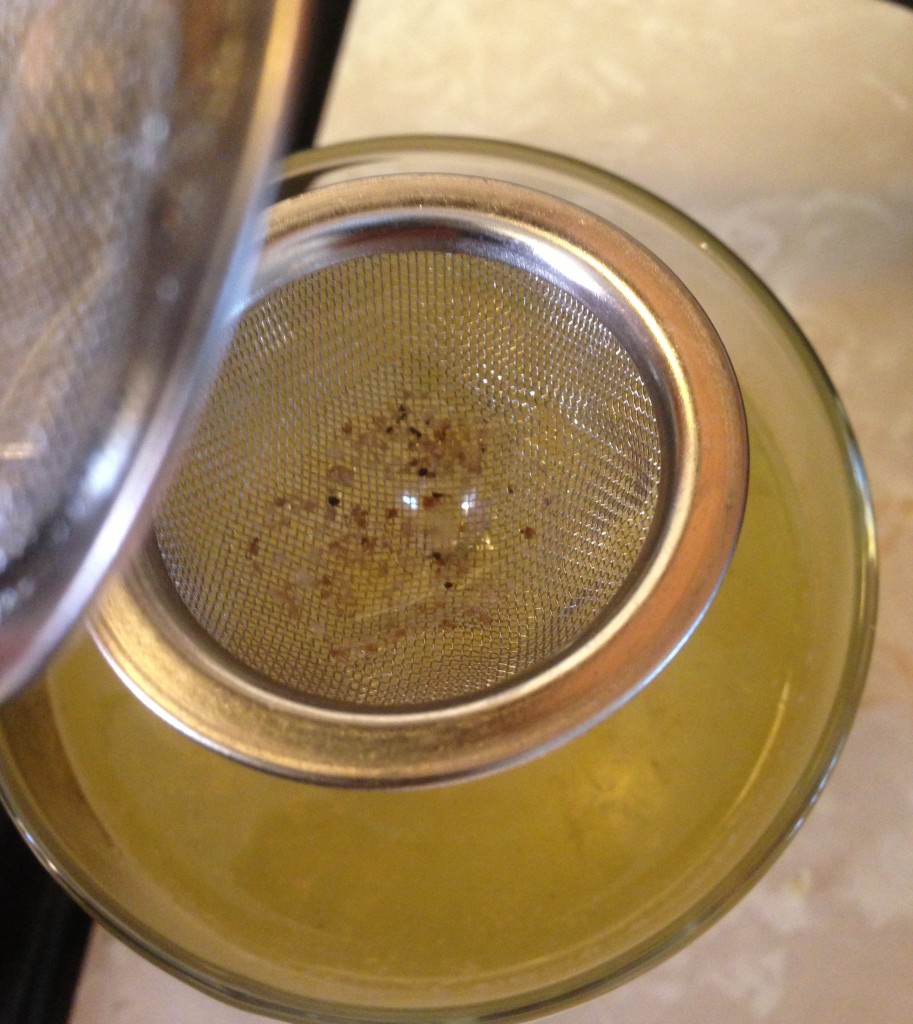

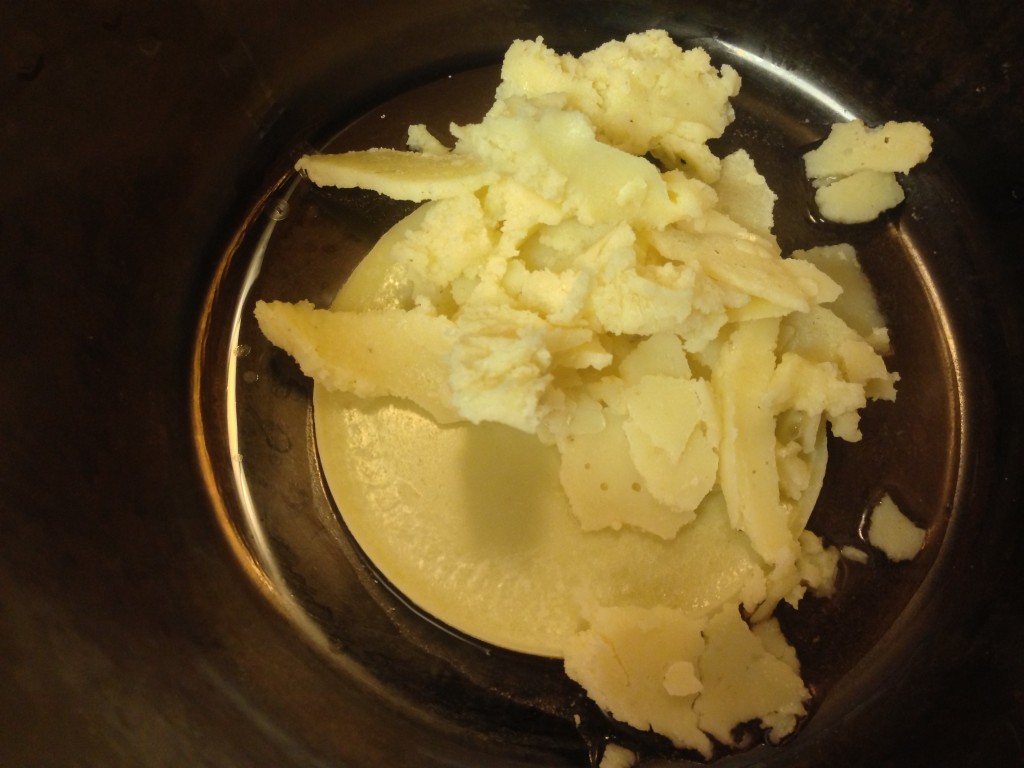

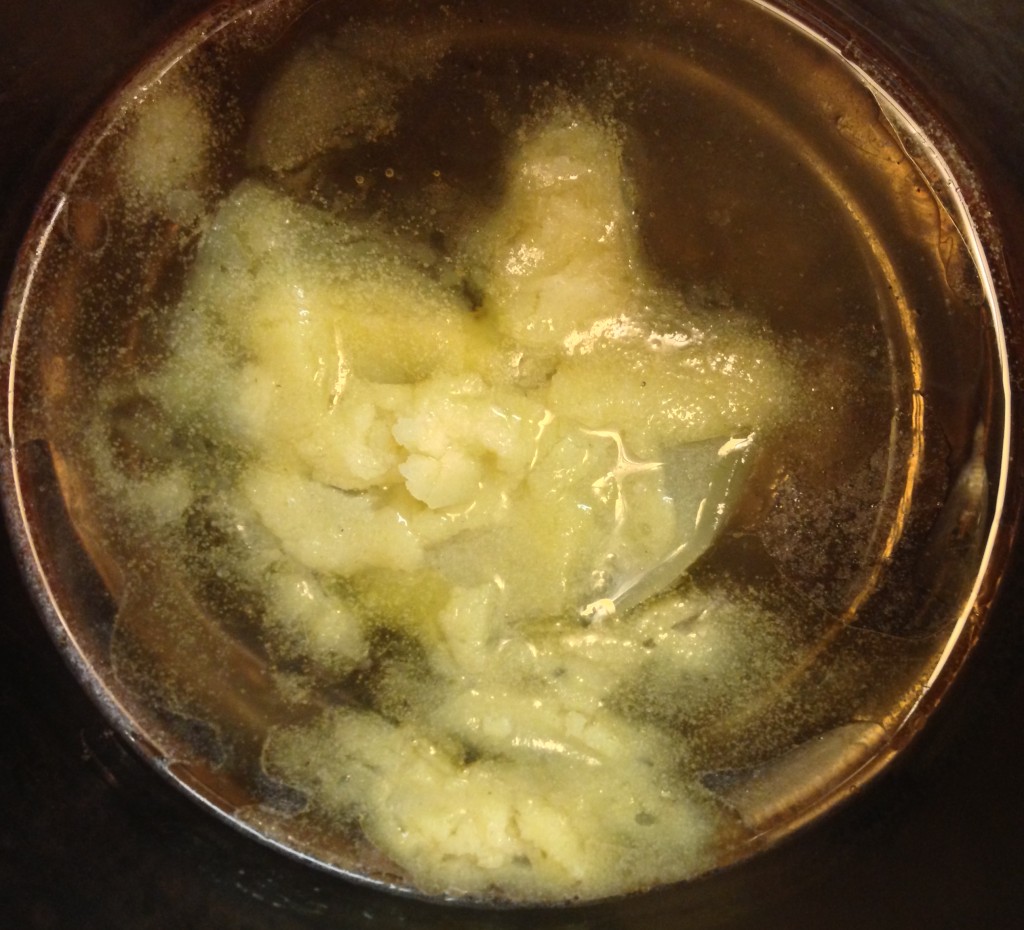
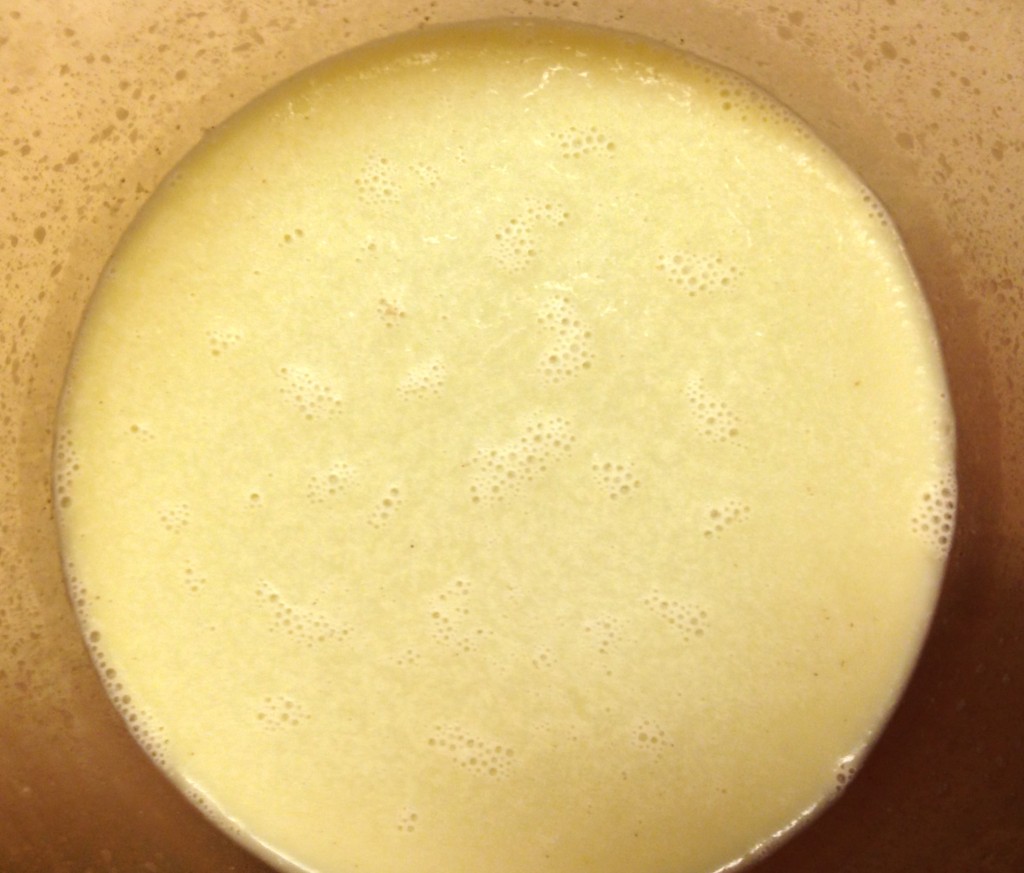
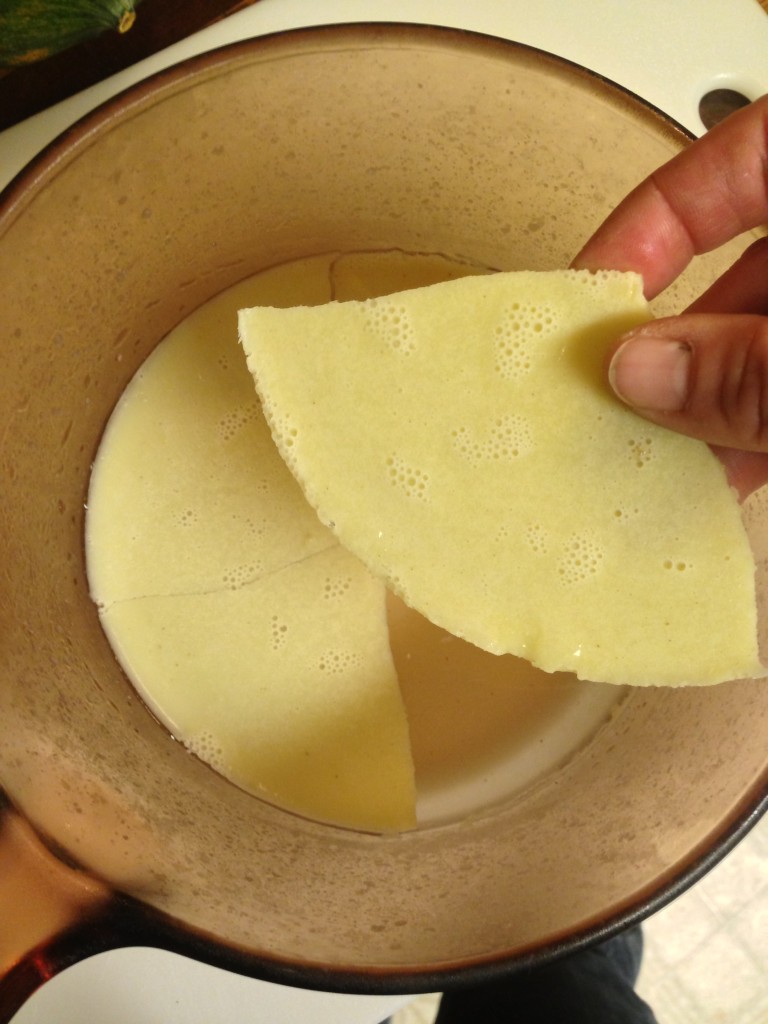



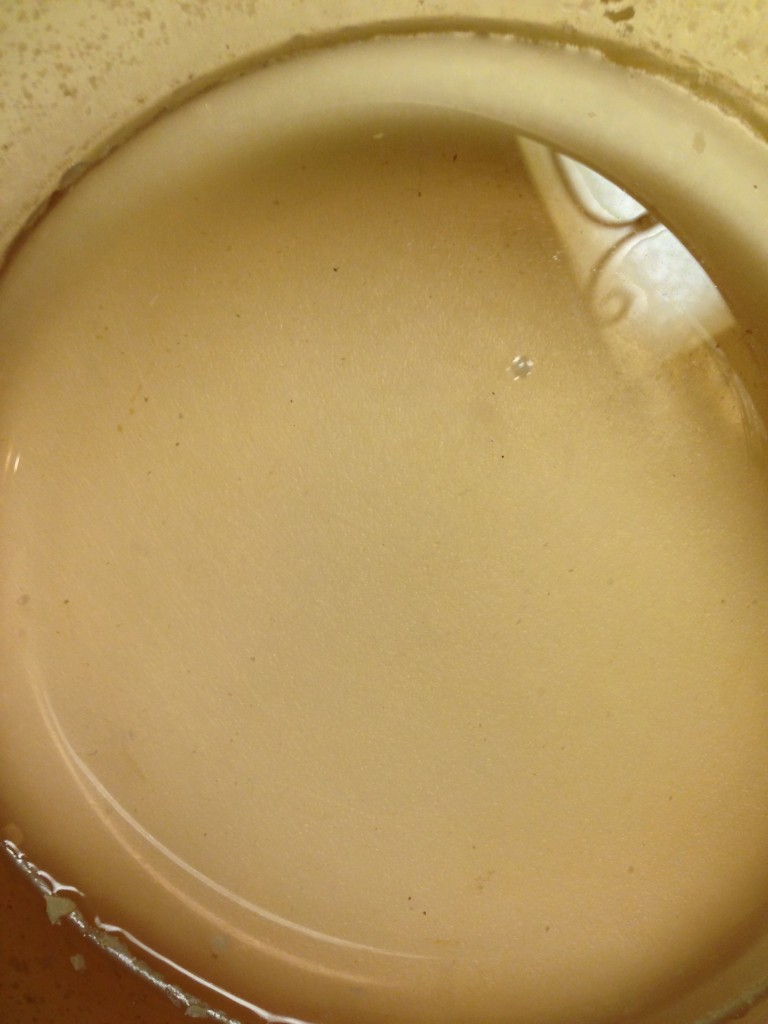
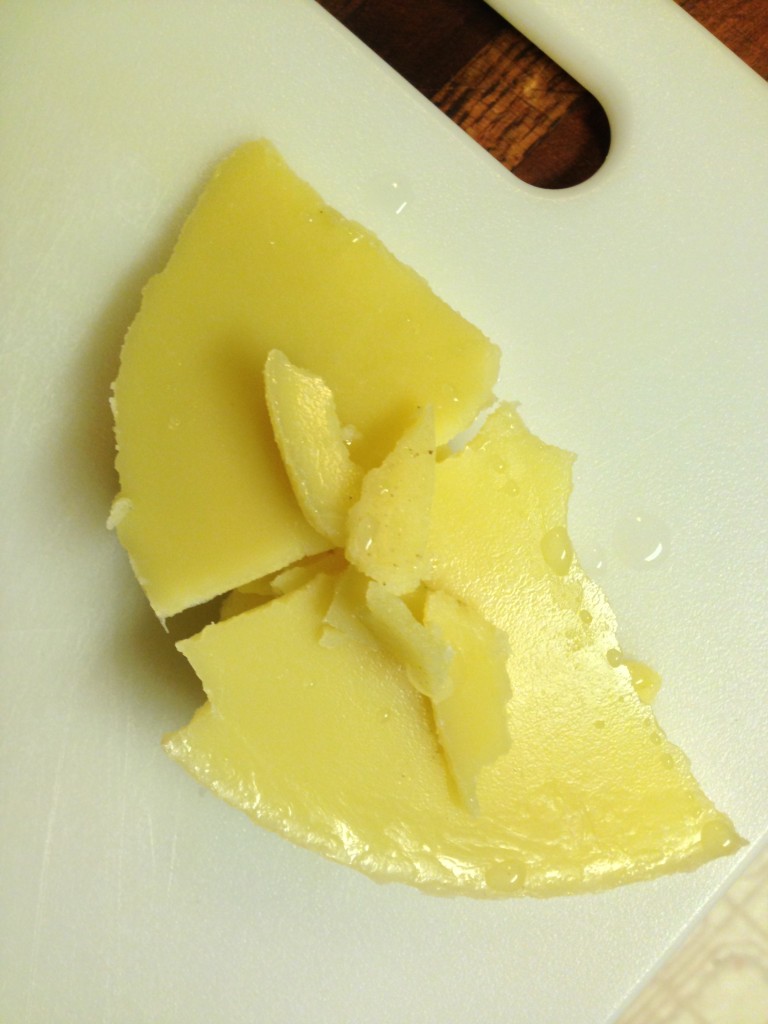

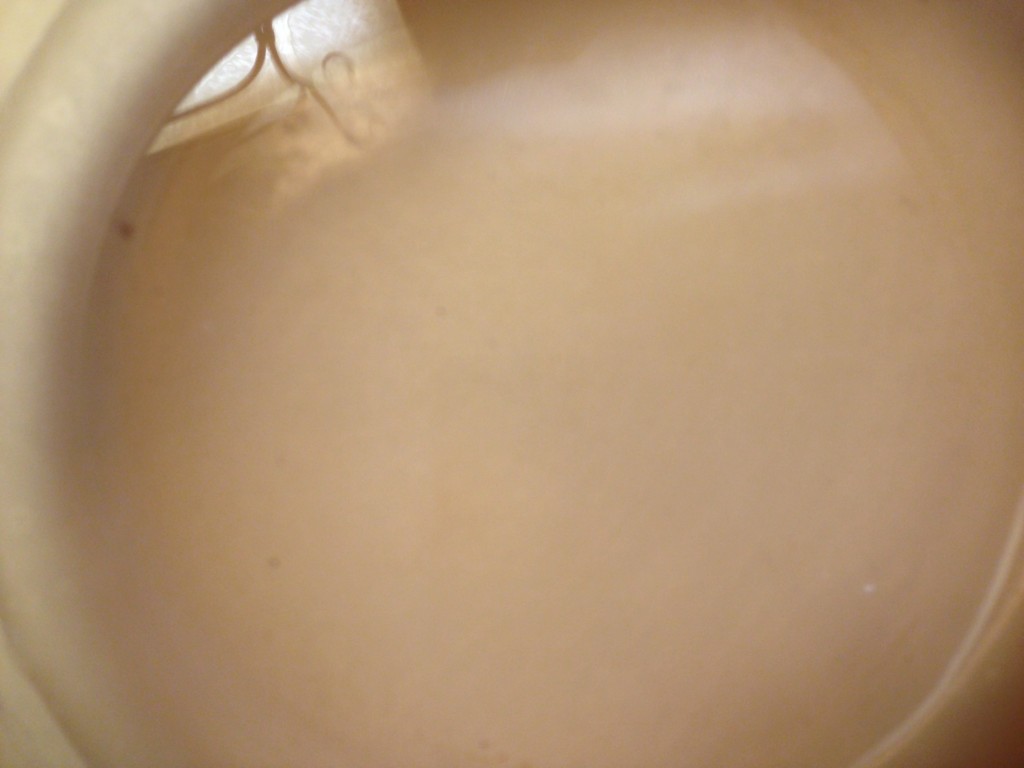

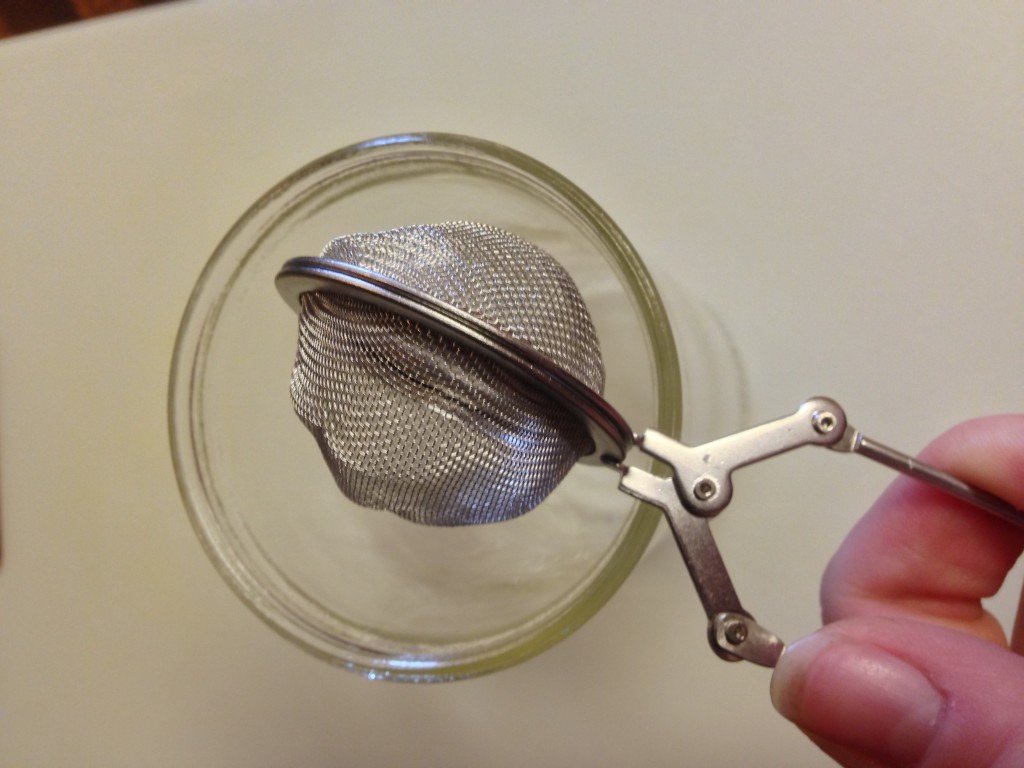

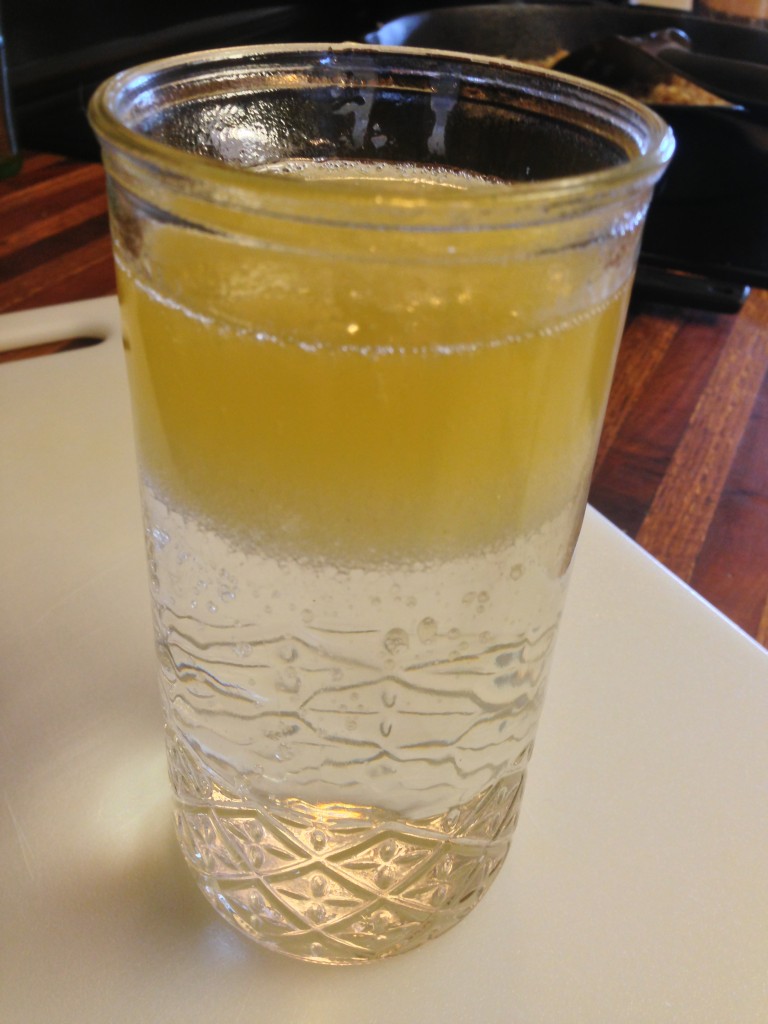

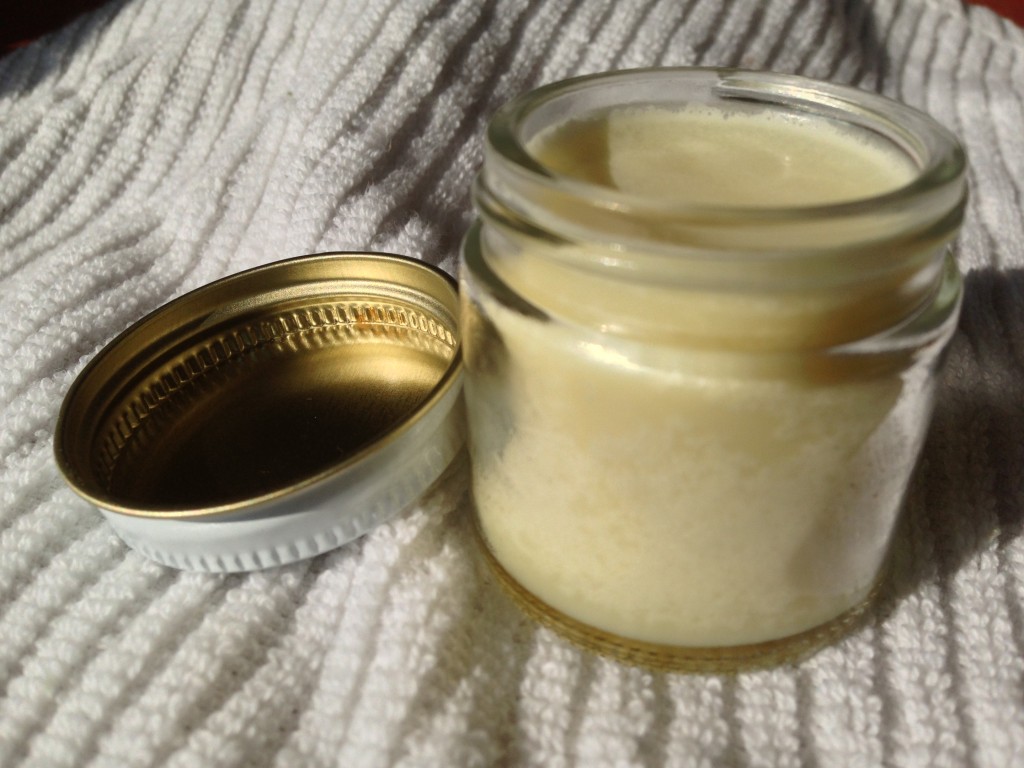







Great post! I usually start with 5-10 pounds of raw fat for soap making, so after rendering it, I pour the tallow through a mesh strainer lined with several layers of cheesecloth (to remove all the “cracklings” and coarse sediment) into a pot of hot water, then let that cool and harden. After that, I use the same method you describe to really get it clean. Helps with the odor too. (Nobody wants bacon or pot-roast scented soap, go figure!)
Wow! You mean my Mom was RIGHT? LOL
Thanks for telling me you do this, too – I was wondering if this was a skill that had been lost to the ages. You’re right, though; there was almost no odor to the tallow when I was done. It really probably didn’t even need the essential oils (I just added them because they smell purdy. LOL) Next time I might try straining it through the filter with cheesecloth just to catch the bigger bits right away, though.
Thanks again, Ruth!
Oh, I’m coming back to this….
Hope it works for you!
Holy Smokes and to think I have been feeding my Tallow to the dogs! eesh! Ok trying this I have horrible skin with allergies and exzema. I do pretty good with Jojoba and coconut oil and use them on hair and skin to moisturize and clean and shave. and occasionally use shea butter, but it gets so expensive I bet I can use this with the other stuff to make an AUSOME LOTION and save some $$. I love natural stuff, despite the work.
I also just learned you can soak egg shells in AVC for a few days to get the calcium/nutrients out I am going to try this next time and use the calcium/ACV mix in my bone broth to get the minerals out of the other bones!! my mind has been blown today!
LOL Dog food?! Love it! Stop feeding such yummies to your dogs – tallow makes a great moisturizer, and it also makes soap and candles! Way too useful to use as dog food! 🙂
I’ve been thrilled with how it works for my skin. And I love the AVC/egg shell thing! Never heard of that before – I’ll have to look into it. Thanks for the tip!
i did not have luck so far with the egg shells…I read a new post and it said to grind them first in a coffee grinder and then add to a fresh acid lemon juice or vinegar and it should bubble 🙂 I will report back if I have luck with all the egg shells saved up in my freezer
Ok so my question on cheese cloth or coffee filters for filtering your tallow…doesn”t the oil clog up on the cheese cloth or filter? for some reason in my head I can”t get the visual of the fats sticking to the cheese cloth?
Sorry the egg shells haven’t worked out for you…yet. 😉 I’m sure you’ll figure out something!
You know, I haven’t actually used the cheese cloth yet. So far, I just keep straining it through a very fine mesh sieve and it catches just about all the sediment by the 4th or 5th washing. I’ve used a tea strainer, because it’s finer than a typical strainer, and it has worked beautifully.
Ruth (comment up above) has used cheese cloth, though, and after chatting with her over the last few months I’d say that if she says it works – it works! She’s sort of a genius at homesteading/farming/natural/DIY stuff!
I’d guess you would pour it through the cheese cloth when the fat and water mixture is at its hottest; it would be more likely to just run though that way. You would probably lose some tallow that would stick to the material, but not a lot…at least, that’s my best guess. 🙂
Pingback: Delicious Vegan, Gluten-Free, Fructose-Free Chocolate Cake AND Frosting! - Cradle Rocking Mama
Pingback: Gluten/Dairy/Egg/Soy-Free Pumpkin Pie & Crust - Cradle Rocking Mama
Hi! I just stumbled on your site and am so glad. I got to this post from your GF/DF/EF cake recipe. Q: can one buy pure chicken lard?
Hi Jennifer! So glad you are here! 🙂
Hmm…I would imagine one could buy pure chicken fat from somewhere, but since I’ve never done it I don’t have a reputable site to recommend. You could search online for a source; you could also ask at a grocery store that caters to Jewish cooking. Chicken fat is commonly used in Jewish cooking.
In the meantime, the next time you make a whole chicken or any chicken with the bones and skin (and therefore, fat), try making stock with the bones, skin and fat and skim off the fat after it chills. Then clean it the same way I did the beef fat and you can use it in anything!
If you find a great place to buy organic chicken fat, please let me know! Thanks for the question and hope this was somewhat helpful. 🙂
Merry Christmas!
Hey guys! FATWORKS has chicken fat, and they’re having a sale right now. I buy my grass fed tallow from them to make my facial moisturizer and it’s just awesome! They have other kinds of tallow as well. Buffalo, Beef, they have duck fat, lamb tallow and more! Give them a try! Hope this helps
Hey Sonya! Thanks! I’ve seen Fatworks tallow and lard in the stores and I think it’s a great product.
Just want to point out, though, that it is $16.25 for a 14 oz. jar of beef tallow, so it can get pricey if you don’t find sales. Also, why waste perfectly good tallow that is leftover after making steaks or roasts?
It’s the best of both worlds! Clean your own to save some money, and buy Fatworks when you run out or just need extra! Thanks for sharing!! 🙂
I’ll have to do that, Carrie. 🙂
I actually plan to go to our Whole Foods store to see what suggestions they have.:) I’ll let you know what they say.
I’m so excited to try this! I have colitis and multiple digestive issues and intolerances and struggle finding safe recipes. I made a gluten free cake the other day and tried to substitute the eggs for bananas and the oil for almond milk. It was pretty bad. lol I shared the link to the cupcakes on my FB wall. Now I’m going to share it on a colitis forum I’m part of. (Most of the folks there have a large number of intolerances and will be glad to find your site.)
Hi Jennifer! I saw where you had posted the recipe on the forums and read the comment about dextrose and corn. Do you have a problem with corn? If you do, just know that dextrose CAN be derived from tapioca instead of corn – you just have to make sure to buy specific types of dextrose. And you could always sub some other type of granular sugar in place of the dextrose if you need to. 🙂
Hmm…bananas would work as a sub for oil really well, or for eggs, but it might be a bit much to expect of bananas to sub for both! LOL Also, the fewer eggs you need to sub out in a recipe, the better. One is ideal, two is fine, three or more and it starts to get hairy in the kitchen! 🙂
If you’re okay with flax or chia, you can use those as an egg substitute. Then use the banana as an oil substitute, and you might have some yummy cupcakes! 🙂
By the way, I’ve really enjoyed reading your blog! Your most recent post on Christmas has a photograph of a church near my house, actually! (The Cross Church photo). Sort of tickled me. 😉 I didn’t want to read about losing your marbles. My kiddos are so young but I can already cry bucketloads at the thought of them growing up and moving away!
Yes, some members of the forum did ask if I was ok with corn. Honestly, I’m not sure as I haven’t really reached “remission” yet and I still largely subsist on chicken and rice or potatoes. But I’m working on adding to my diet!
I also wondered if coconut oil would work. (I don’t know yet if I tolerate coconut/coconut oil, but will add it as a test food.) I know coconut oil can be thicker.
Thank you for the kind words regarding my blog! That’s funny about the photo!
I understand your feelings on the marbles. I am so not looking forward to our princess leaving home.
The reason the usual cooking oils are more suspect is that they’re unsaturated oils–there are gaps in the fat molecule, and those gaps are very welcoming to free radicals, which causes the oil to go rancid faster. (The process of hydrogenation involves plugging up all those gaps with hydrogen molecules, having the effect of solidifying the oil at room temperature. Unfortunately it also makes the fat molecule very, very unhealthy for you. It’s different from naturally saturated fats, though I’m not sure what the differences are. Dr. Mary Enig has written about this if you want to Google her.)
The trouble is that by the time you’ve bought the oil, you’ve already got basically a rancid oil but it’s been deodorized so you don’t smell the rancidity. For this reason I will not buy corn, peanut, or soybean oil, because between the processing and the bottling in porous plastic and the exposure to light (oils are supposed to be packaged in dark bottles), I’m basically throwing my money away, and that’s before the effects of unsaturated oils on human health, which are not good, overall.
Canola oil has similar issues. It contains more monounsaturated oil, which is better for you than polyunsaturated, but it’s still been processed out the wazoo and I don’t trust it.
Olive oil has had the least amount of crap done to it, but it’s also unsuitable for deep-frying. Being mostly monounsaturated it is more stable than polyunsaturated oil, but it can still be broken down in bad ways or made rancid. It’s best eaten cold or room-temperature.
So… yeah. Public health officials made a big mistake telling us to abandon tallow and lard as foods. Since I got them and dairy fat back into my diet I’ve noticed a big difference in my mental health, too. If I’m naughty and eat junk food with this stuff already in my diet, I don’t feel as bad afterward and I don’t get all the crazy blood sugar swings. If I’m eating healthy and avoiding the junk food, I feel like a million bucks.
Thanks for this post! Sharing. 🙂
Thank you, Dana!
This is fabulous information! I considered including it in the post but I try to keep my posts from getting TOO long, so I’m SO glad you wrote this! You’re absolutely right about the rancidity of the oils we typically use these days. Tallow and lard are much better options.
So glad you stopped by! I’ll check out Dr. Enig and read more about what you just shared. 🙂
I am picking up some suet tomorrow and cannot wait to try rendering for the first time! I plan on using the tallow primarily for skin care (but I’m sure I will have plenty to cook with as well). With that in mind, cleaning it several times to produce a nice texture for my skin seems logical. My question, however, is this: Does all the cleaning and filtering remove nutrients from the tallow? My thinking is, a lesser amount of “processing” might keep the tallow more jam packed with goodness for my skin. Sorry if this seems a silly question, I am brand new to the tallow revolution!
Hi Emily!
Yay! Goodie for you for rendering tallow! It’s awesome stuff. 🙂
That’s a really good question, and I don’t exactly know the answer. Thinking about it, though, I can’t imagine it would diminish the tallow in any way. It’s just water and tallow in a pan, and the tallow separates completely from the water when it hardens. Really, it just seems to remove bits and pieces of “foreign matter”, which makes the tallow nicer and more pure.
One of my readers is a soap maker and she said she cleans her tallow several times before using it for soaps because it removes the “beefy” smell, and that her soaps always come out beautifully and fully moisturizing. So I think a good 3-4 times of cleaning your tallow won’t diminish the tallow in any way.
If someone else reads this and knows something to the contrary, please chime in! And Emily, if you learn something about this along the way, feel free to correct me!
I hope your tallow making goes brilliantly! Welcome to the revolution! 🙂
i am able to purchase the fat from my meat dept that they cut from the meat (at customers request) and when we make hambuger i keep the fat that is rendered from it (and any beef that we cook in the house)
most of the time, with the crunchy bits or the liquid that is not beef talow, i keep those in the frig and every week use it (plus 1 to 2 tablespoons of tallow or lard) to make homemade doggie cookies. i have the knowledge that i know exactly what went into my doggies treats (no preservatives or salts or corn nor do they come from china) and the recipe i developed is really easy to make. yes, it is time consuming using a 1 inch cutter to make about 200-250 treats but worth it.
my sister has asked me to make her some as well for her dogs.
if you have pets or animals, instead of throwing that water away, you might think about giving to them or making something for them.
just an idea.
plus, i render my tallow through coffee filters layered over my metal strainer and it seems to work out pretty good.
thanks for the info about the cleaning, i had been looking for some info on it and came across your blog.
have a bunch of tallow which i’ll start cleaning on sunday to get ready for my 1st ever batch of hot processed soap. wish me luck.
p.s.
my little chihuahua does not get enough ‘fat’ in her special dogfood and when i give her the treats i make i can see the difference in her coat and that fact that her skin is not dried out (in other words, she stops scratching herself) plus she has an easier time….going bathroom.
i live in a house with 5 little dogs and they know the sound of the ziplock bag now.lol. they all come running and will look at the bag licking their lips. it is a funny sight to see.
Hi Teresa!
I love this comment! You’re doing a good job treating your animals right. I’m glad they’re getting good, yummy treats. 🙂
Hi, just found your site and love it. I’m from Ontario Canada, so not sure where I could order tallow from. If I went to a halal meat place I could just ask for beef fat, right?
Where could I find a recipe for dog cookies with tallow? My dog coat doesn’t shine and seems coarse.
Thanks
Hi Sophia! Glad you’re here. 🙂 Any butcher would probably be able to help you find beef fat. I know there is a place online to order it, but I can’t remember the site name. Probably google would find it for you.
Sorry I can’t help with the dog cookies; we don’t have a dog, so I have no idea what they need. Try searching online. Good luck!
Pingback: Egg-Free, Gluten-Free Salmon Patties - Revisited! - Cradle Rocking Mama
Thanks for the guide.
Also,
http://www.livescience.com/33075-how-bees-fly.html
Glad I could help! And, yes, I have been corrected about the bees flying…but that link is fascinating! Thanks for sharing!
Thanks for posting this! I used a variant of your process to clean up a bunch of bacon fat for soap making. I boiled it with vinegar water first to remove the rancidity. (I assume that this actually works.) I then did multiple washes to remove more yucky stuff. This yields a pretty good soap without a bunch of impurities.
I’m glad it worked for you! Interesting that you used vinegar water first; may I ask why? I’ve never heard of that method!
Sorry for the delayed response to the vinegar question. I have read that the vinegar will remove the rancidity of oils prior to soapmaking. I have done a little research and can’t find a scientific reason for why (or if) it works. The acid might might react with smelly molecules.
Thank you!
Pingback: Tallow Hand Cream -
Pingback: 13 nifty cleaning hacks to cut down your cleaning time. Life just got easier
Thank you for your article 🙂 – does this water processing method also deodorise the tallow, or is it still smelly? I have tried to clean tallow using bicarb before, but am still accused of smelling like school dinners when I use it as a moisturiser! :O Thanks
It definitely helps with the odor! Tallow is going to smell like tallow, but it won’t reek like it does when it is first made. I typically use essential oils in my tallow moisturizer blends and the process of cleaning plus the addition of EO’s means it usually doesn’t have much of an offensive odor, if any at all.